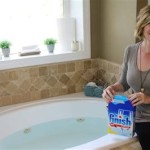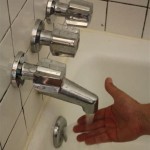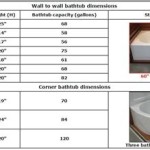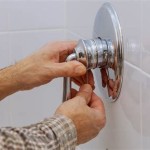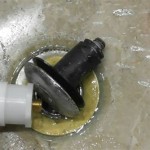How to Drain a Kohler Bathtub: A Comprehensive Guide
Kohler is a well-known manufacturer of high-quality bathtubs and bathroom fixtures. While Kohler bathtubs are designed for durability and ease of use, occasional issues with drainage can arise. Understanding how to properly drain a Kohler bathtub, diagnose potential problems, and implement solutions is essential for maintaining a functional and enjoyable bathing experience. This article provides a comprehensive guide to draining a Kohler bathtub, covering various drain types, troubleshooting techniques, and preventative measures.
The drainage system of a bathtub is a critical component. Its primary function is to efficiently remove water after use, preventing overflows and potential water damage. A properly functioning drain also contributes to hygiene by preventing the buildup of stagnant water and associated debris. Regular maintenance of the drain system ensures its long-term performance and minimizes the risk of costly repairs.
Identifying Your Kohler Bathtub Drain Type
Kohler bathtubs utilize various types of drain mechanisms. Recognizing the specific type installed in a particular tub is crucial for effective troubleshooting and repair. Common drain types include lift-and-turn drains, toe-touch drains, pop-up drains, and trip-lever drains. Each type operates differently and requires specific techniques for removal and maintenance.
Lift-and-Turn Drains: This type of drain features a knob or handle that is lifted and turned to open or close the drain. The handle is typically connected to a plunger that operates within the drainpipe. To drain the tub, the handle is lifted and turned, raising the plunger and allowing water to flow through. To close the drain, the process is reversed.
Toe-Touch Drains: Toe-touch drains are activated by pressing down on the drain cover with a foot or toe. Pressing the drain cover once seals the drain, while pressing it again releases the seal and allows water to drain. These drains often utilize a spring-loaded mechanism to control the opening and closing of the drain.
Pop-Up Drains: Similar to toe-touch drains, pop-up drains are operated by pressing down on the drain cover. However, pop-up drains may incorporate a more complex linkage system that connects the drain cover to a pivoting stopper within the drainpipe. This system allows for a more reliable and secure seal.
Trip-Lever Drains: Trip-lever drains are typically found in bathtubs with an overflow drain. A lever located near the overflow drain controls a plunger or stopper within the drainpipe. When the lever is tripped, the plunger lifts, allowing water to drain. These drains are often more complex to repair than other types due to the linkage system connecting the lever to the drain.
Troubleshooting Common Kohler Bathtub Drain Problems
Several issues can impede the proper drainage of a Kohler bathtub. Clogs, caused by hair, soap scum, and other debris, are among the most common. Other potential problems include faulty drain mechanisms, damaged drainpipes, and improper installation. Identifying the underlying cause of the drainage problem is essential for selecting the appropriate solution.
Slow Drainage: Slow drainage often indicates a partial clog in the drainpipe. The obstruction restricts the flow of water, leading to a gradual draining process. This issue can often be resolved by removing the drain stopper and clearing any visible debris from the drain opening. A plunger or drain snake may also be necessary to dislodge deeper clogs.
Completely Blocked Drain: A completely blocked drain prevents any water from draining from the tub. This typically indicates a significant clog that is completely obstructing the drainpipe. In such cases, more aggressive measures, such as using a drain snake or chemical drain cleaner, may be required. However, caution is advised when using chemical drain cleaners, as they can damage drainpipes if used improperly.
Drain Not Sealing Properly: If the drain is not sealing properly, water may slowly leak out of the tub even when the drain is closed. This can be caused by a worn or damaged drain stopper, a misaligned drain linkage, or debris obstructing the sealing surface. Inspecting the drain stopper and surrounding components for damage or debris is the first step in addressing this issue.
Unusual Noises During Drainage: Gurgling or other unusual noises during drainage may indicate a problem with the plumbing vent system. The vent system allows air to enter the drainpipes, preventing a vacuum from forming and ensuring smooth drainage. If the vent system is blocked or malfunctioning, it can cause air to be drawn back through the drain, resulting in unusual noises.
Steps to Drain a Kohler Bathtub and Address Common Issues
The specific steps required to drain a Kohler bathtub and address drainage issues will vary depending on the type of drain and the nature of the problem. However, the following general steps can be applied to most situations. Safety precautions, such as wearing gloves and eye protection, should be observed when working with plumbing fixtures and drain cleaning tools.
Removing the Drain Stopper: The first step in addressing any drainage problem is to remove the drain stopper. The method for removing the drain stopper will depend on the type of drain. For lift-and-turn drains, simply lift and turn the handle to its open position, then carefully lift the stopper out of the drain opening. For toe-touch and pop-up drains, the stopper may need to be unscrewed or pried out using a flathead screwdriver. Trip-lever drains typically require disconnecting the linkage connecting the lever to the drain stopper.
Inspecting the Drain Opening: Once the drain stopper has been removed, inspect the drain opening for any visible debris, such as hair, soap scum, or other obstructions. Use a small hook or tweezers to remove any visible debris from the drain opening. A flashlight can be helpful for illuminating the inside of the drainpipe.
Using a Plunger: A plunger can be an effective tool for dislodging clogs in the drainpipe. Ensure that there is enough water in the tub to cover the cup of the plunger. Position the plunger over the drain opening, creating a tight seal. Push and pull the plunger up and down vigorously for several minutes. Remove the plunger and check if the water drains more freely. Repeat the process if necessary.
Using a Drain Snake: A drain snake, also known as a plumber's snake, is a flexible tool that can be inserted into the drainpipe to break up or retrieve clogs. Insert the end of the drain snake into the drain opening and carefully feed it down the drainpipe. Rotate the handle of the drain snake to help it navigate bends in the pipe. When you encounter resistance, continue rotating the handle to break up the clog or hook onto it. Once you have broken up the clog or hooked onto it, slowly withdraw the drain snake from the drainpipe. Clean the drain snake thoroughly after each use.
Using Chemical Drain Cleaner: Chemical drain cleaners can be effective for dissolving certain types of clogs, such as hair and soap scum. However, they should be used with caution, as they can damage drainpipes if used improperly. Always follow the manufacturer's instructions carefully when using chemical drain cleaner. Wear gloves and eye protection to protect yourself from splashes. Avoid mixing different types of chemical drain cleaner, as this can create dangerous fumes. Flush the drain thoroughly with water after using chemical drain cleaner.
Adjusting the Drain Linkage (for Trip-Lever Drains): If the drain is not sealing properly, the linkage connecting the trip lever to the drain stopper may need to be adjusted. Locate the adjustment screw on the trip lever mechanism. Loosen the screw and adjust the length of the linkage until the drain stopper seals properly. Tighten the screw to secure the adjustment.
Replacing the Drain Stopper: If the drain stopper is damaged or worn, it may need to be replaced. Purchase a replacement drain stopper that is compatible with the type of drain installed in the bathtub. Install the new drain stopper according to the manufacturer's instructions.
Inspecting and Cleaning the Overflow Drain: The overflow drain prevents the bathtub from overflowing if the water level rises too high. Inspect the overflow drain for any debris or obstructions. Remove the overflow drain cover and use a small hook or tweezers to remove any visible debris. Flush the overflow drain with water to ensure that it is clear.
Preventative Measures for Maintaining a Kohler Bathtub Drain
Preventing drain problems is often easier and more cost-effective than repairing them. Implementing preventative measures can significantly reduce the likelihood of clogs and other drainage issues. Regular maintenance and responsible usage habits are key to maintaining a healthy drain system.
Using a Drain Screen: A drain screen or hair catcher can effectively prevent hair and other debris from entering the drainpipe. Place the drain screen over the drain opening to catch hair and other debris as water drains. Clean the drain screen regularly to prevent it from becoming clogged.
Flushing the Drain with Hot Water: Regularly flushing the drain with hot water can help to dissolve soap scum and other buildup. After each bath or shower, run hot water down the drain for several minutes to flush out any accumulated debris.
Avoiding the Use of Excessive Soap: Excessive soap can contribute to the buildup of soap scum in the drainpipe. Use soap sparingly and opt for liquid soaps over bar soaps, as liquid soaps tend to produce less soap scum.
Periodic Drain Cleaning: Schedule periodic drain cleaning to remove any accumulated debris and prevent clogs from forming. This can be done using a drain snake, a chemical drain cleaner, or a professional drain cleaning service.
Proper Disposal of Waste: Avoid flushing any solid waste, such as cotton balls, feminine hygiene products, or other non-biodegradable materials, down the drain. These items can easily clog the drainpipe and cause significant drainage problems.
By understanding the different types of Kohler bathtub drains, troubleshooting common problems, and implementing preventative measures, homeowners can effectively maintain a functional and efficient drainage system, ensuring a pleasant and hassle-free bathing experience.

Installation And Overview Pureflo Cable Bath Drain

How To Disassemble And Replace Your Kohler Bathtub Drain When It Stops Working Part 1068204

Bath Tub Drain Repair Kohler Toe Push

Replace And Adjust Ing Bath Drain

Kohler Bathtub Installation Part 1 Drain Kit Install Mariposa Purist Acrylic Fiberglass Tub Unboxing

Kohler T37395 Pureflo Bath Drain Trim

Kohler K 7160 Tf Bn Brushed Nickel Clearflo 1 2 Tub Drain Kit With Overflow Faucetdirect Com

Clearflo 1 2 Toe Tap Bath Drain K 7259 Kohler

K 7213 Cp Guillens Com

Have A Question About Kohler Pureflo Rough In Cable Bath Drain White Pg 3 The Home Depot
Related Posts

